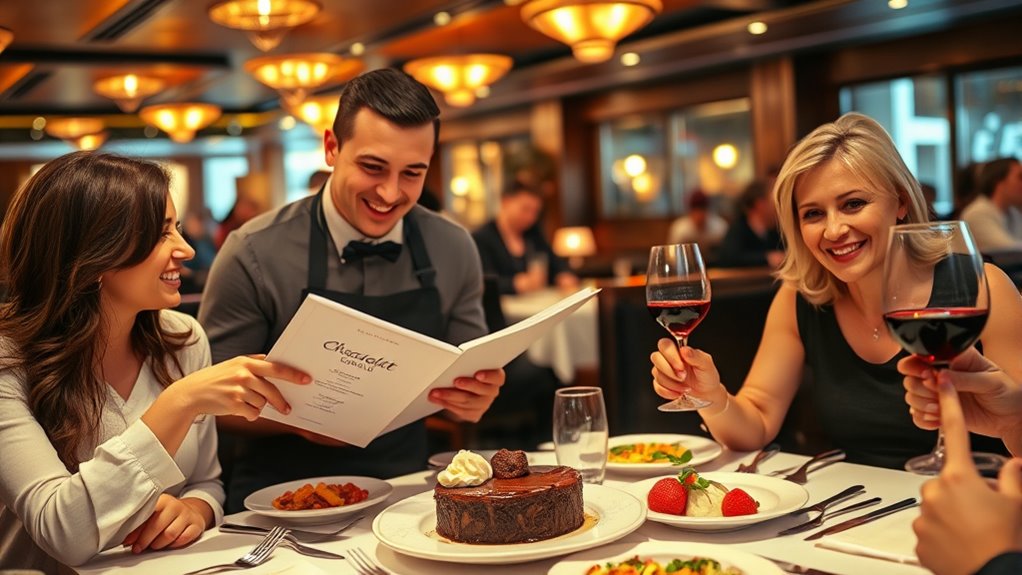In restaurants, upselling encourages you to sell higher-priced or premium options, while cross-selling suggests complementary items to enhance the meal. Upselling focuses on increasing the value of the main order, like upgrading to a fancy steak, whereas cross-selling adds items like drinks or dessert after you’ve made your choice. Knowing when and how to use each technique can boost sales and improve the customer experience. Keep going to discover tips on mastering these strategies effectively.
Key Takeaways
- Upselling encourages customers to choose higher-priced or premium items, enhancing the primary purchase.
- Cross-selling involves suggesting complementary items to increase the overall order value.
- Upselling focuses on upgrading the main item, while cross-selling adds related products or services.
- Timing differs: upselling occurs when guests are ready to order; cross-selling is often during or after ordering.
- Both techniques aim to increase sales but employ different strategies suited to customer preferences.
Defining Upselling and Cross-Selling in the Restaurant Context
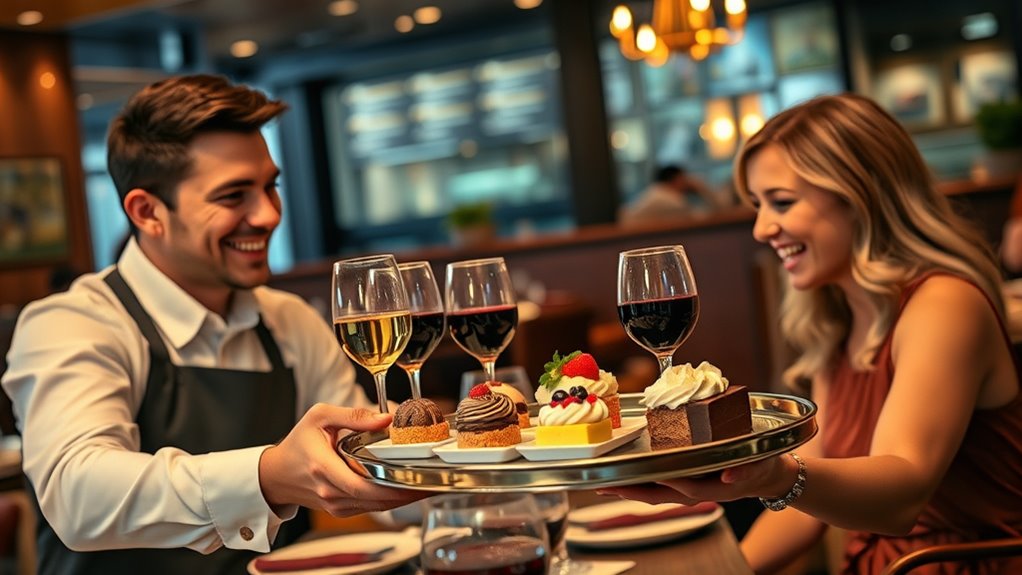
Have you ever wondered what distinguishes upselling from cross-selling in a restaurant? Upselling involves encouraging you to spend more on a single item, like suggesting a premium steak instead of the regular one. It aims to increase the value of your current order by offering a higher-quality or larger portion. Cross-selling, on the other hand, promotes adding complementary items to your meal, such as suggesting fries or a dessert alongside your main course. Both techniques aim to boost sales, but they focus on different strategies. Upselling centers on enhancing the primary purchase, while cross-selling expands your overall order with additional items. Understanding these differences helps servers better tailor their approaches to enhance your dining experience and improve sales. Additionally, employing effective technology can streamline the ordering process, making these sales strategies more successful.
Effective Techniques for Upselling in Dining Settings
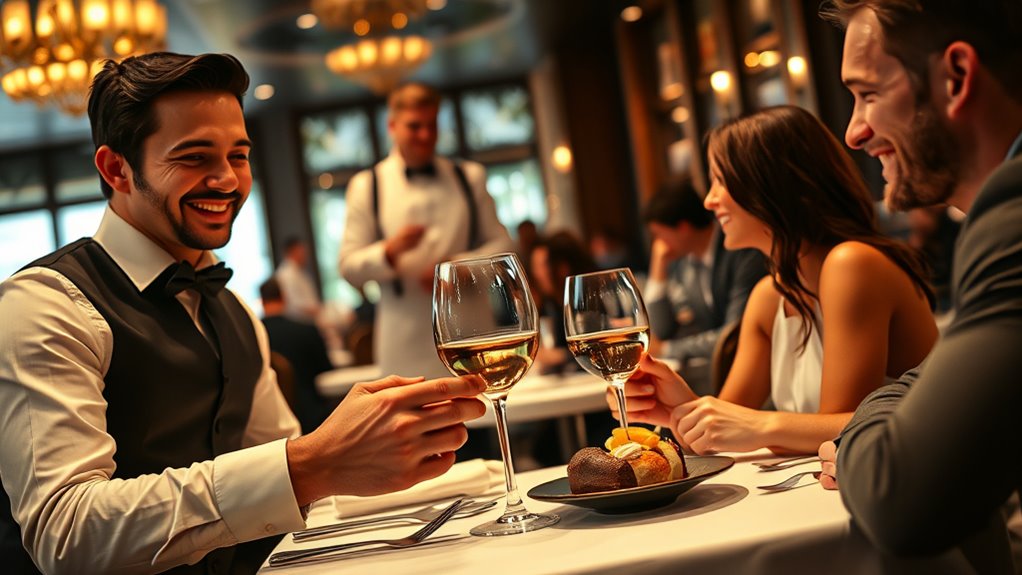
To effectively upsell in a dining setting, servers need to employ specific techniques that feel natural and helpful rather than pushy. Focus on suggesting options that complement the customer’s choices and highlight the value. Use descriptive language to make items appealing and personalize recommendations based on what the customer ordered. Timing is key—offer suggestions when the guest is most receptive, like after they’ve ordered or while they’re deciding. Maintain a friendly, confident tone to build trust. Recognizing the importance of customer trust can significantly enhance the effectiveness of upselling efforts.
Strategies for Successful Cross-Selling to Enhance Customer Experience
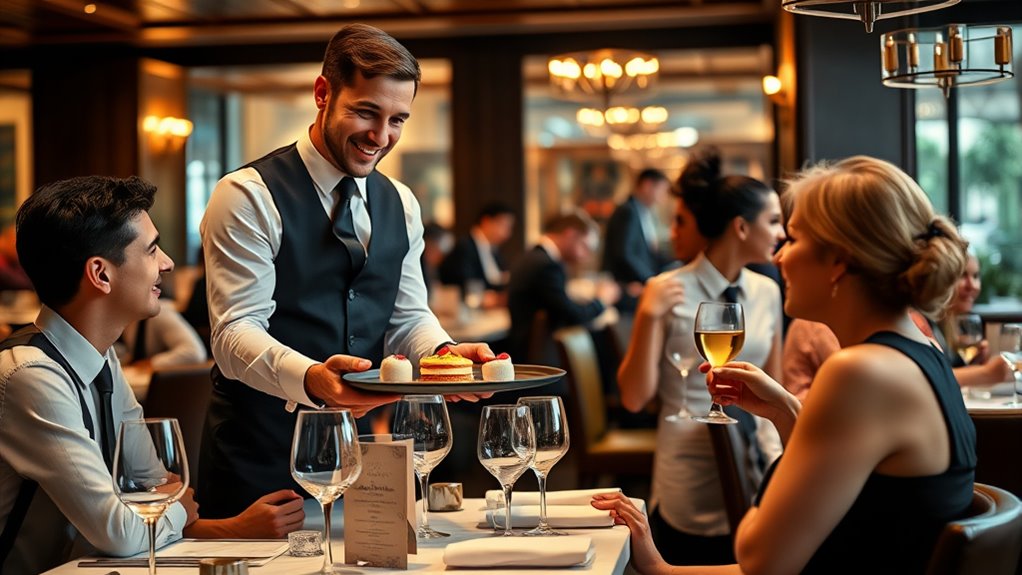
Effective cross-selling in a restaurant setting involves understanding your guests’ preferences and seamlessly suggesting complementary items that enhance their meal. Pay attention to their orders and listen for cues about their tastes. Offer relevant suggestions naturally, such as recommending a glass of wine to pair with their entrée or suggesting a side dish that complements their main course. Keep your tone friendly and genuine, avoiding pushiness. Timing is key—you should suggest items when the guest is receptive, like during ordering or after serving their main dish. Personalize your recommendations based on their choices and dining habits. By doing so, you not only improve their experience but also increase your sales, creating a win-win situation. Remember, genuine suggestions feel more like helpful tips than sales pitches. Incorporating mindful decluttering strategies can also help you stay organized and attentive to your guests’ needs, enhancing the overall service experience.
When to Use Upselling Versus Cross-Selling for Maximum Impact
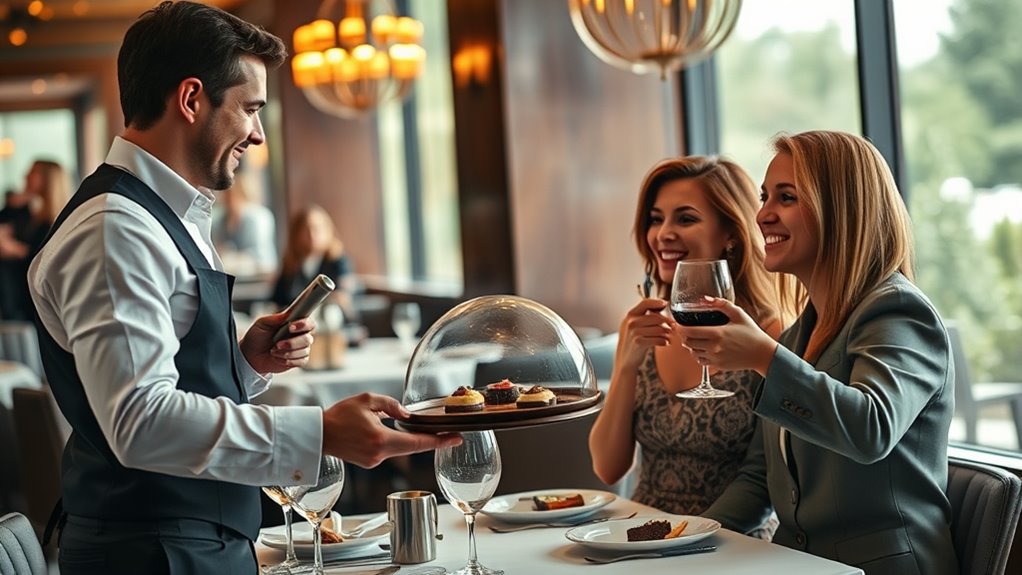
Choosing the right moment to employ upselling or cross-selling can substantially boost your restaurant’s sales and enhance the guest experience. Use upselling when your guest is ready to order and you want to suggest a higher-end item or add-ons to increase the ticket size. Cross-selling works best when your guest has already chosen a dish and you suggest complementary items to improve their meal. Recognizing moments of artistic innovation can also serve as an analogy for timing your sales strategies effectively. Consider these moments:
Upsell when guests are ready to order; cross-sell after they’ve chosen their dish.
- When presenting the menu or specials
- While taking the order
- During order confirmation
- When delivering the check
Timing is key—you want your suggestions to feel natural and helpful, not pushy. Knowing when to upsell or cross-sell ensures you maximize sales without compromising guest satisfaction.
Training Staff to Master Both Upselling and Cross-Selling Skills
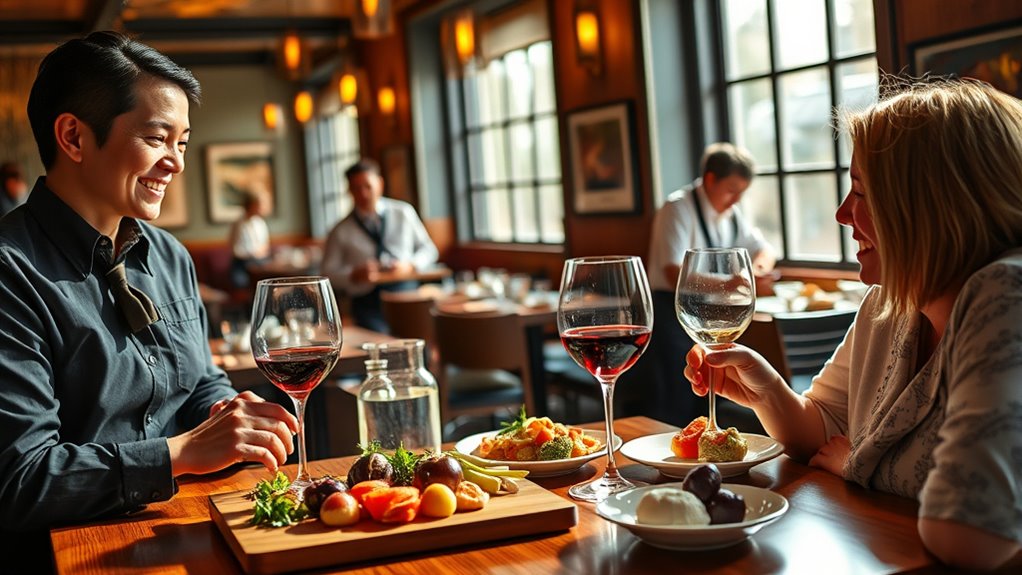
Training your staff to excel at both upselling and cross-selling is essential for boosting sales and enhancing the guest experience. Start by providing clear, practical scripts that help them suggest relevant upgrades or complementary items confidently. Use role-playing exercises to build their skills and comfort level, emphasizing genuine enthusiasm and attentive listening. Teach them to recognize guest cues and preferences, so recommendations feel personalized rather than pushy. Regular coaching and feedback are crucial to reinforce techniques and boost confidence. Encourage a team mindset where upselling and cross-selling are seen as ways to add value, not just increase sales. Additionally, educating staff about essential oils and their benefits can help them make more informed and appealing suggestions to interested guests. By fostering a supportive environment and equipping staff with the right tools, you’ll see improved performance and happier guests.
Frequently Asked Questions
How Do Customer Preferences Influence Upselling and Cross-Selling Strategies?
Customer preferences play a vital role in shaping your upselling and cross-selling strategies. When you understand what your customers like, you can recommend items that match their tastes and needs, increasing the chances they’ll make additional purchases. By listening carefully and observing their choices, you can tailor your suggestions, making them feel valued and understood. This personalized approach boosts sales and enhances their overall dining experience.
What Are Common Mistakes to Avoid When Implementing These Techniques?
Remember, haste makes waste. When implementing upselling and cross-selling, avoid pushing too hard or appearing insincere. Don’t overlook your customers’ needs or preferences, which can backfire. Stay genuine, listen actively, and recommend relevant options naturally. Overloading customers with suggestions or making them feel pressured can damage trust. Focus on adding value, not just increasing sales, and you’ll foster loyalty and better experiences.
How Can Technology Support Upselling and Cross-Selling Efforts?
You can use technology to boost your sales efforts by implementing digital menus, tablets, or POS systems that suggest complementary items or premium options automatically. These tools make it easy to personalize recommendations based on customer preferences, increasing the chances of upselling and cross-selling. Additionally, data analytics help you identify popular combos, allowing you to tailor offers effectively and enhance the overall customer experience.
What Metrics Best Measure Success in Upselling and Cross-Selling?
Did you know that a 10% increase in upselling can boost revenue by up to 20%? To measure success, track metrics like average order value, conversion rates, and repeat customer purchases. These indicators reveal how well you’re encouraging customers to spend more or try new items. Monitoring these metrics helps you refine your strategies, ensuring your efforts lead to increased sales and customer satisfaction.
How Do Seasonal or Menu Changes Impact These Sales Strategies?
Seasonal or menu changes directly influence your sales strategies by shifting customer preferences and dining trends. When you introduce new items or seasonal specials, you can leverage upselling by suggesting premium options or cross-selling with complementary dishes. You should train staff to highlight these seasonal offerings, making it easy for customers to see value and try new items, which boosts overall sales and guarantees your strategies stay effective throughout different seasons.
Conclusion
By mastering both upselling and cross-selling, you can boost sales and improve customer satisfaction. For example, suggest a premium wine pairings or desserts to enhance their meal. Imagine a diner who upgrades to a fancy appetizer and adds a specialty cocktail—both increase revenue and elevate their experience. When you skillfully blend these techniques, you turn ordinary visits into memorable, profitable moments for your restaurant.
